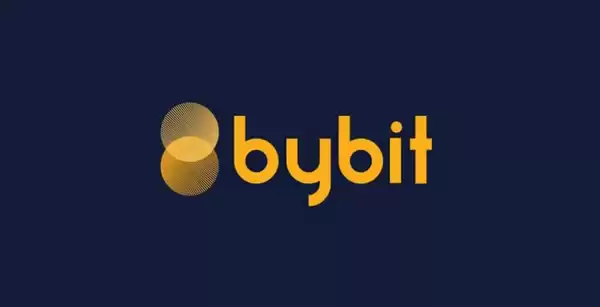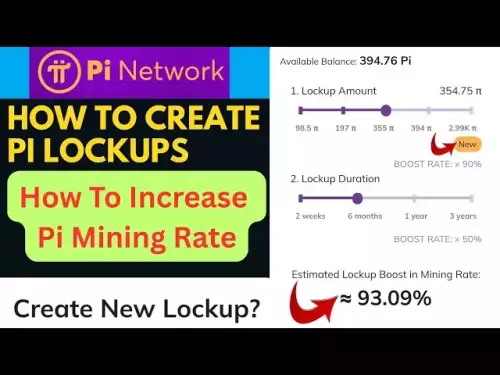-
 bitcoin
bitcoin $114779.865156 USD
2.30% -
 ethereum
ethereum $4226.519789 USD
2.39% -
 tether
tether $1.000545 USD
0.04% -
 xrp
xrp $2.890223 USD
0.92% -
 bnb
bnb $1030.029301 USD
2.95% -
 solana
solana $212.824944 USD
1.69% -
 usd-coin
usd-coin $0.999757 USD
0.01% -
 dogecoin
dogecoin $0.234961 USD
-0.27% -
 tron
tron $0.337174 USD
0.42% -
 cardano
cardano $0.804783 USD
0.09% -
 hyperliquid
hyperliquid $45.748770 USD
-2.85% -
 chainlink
chainlink $21.699170 USD
0.82% -
 ethena-usde
ethena-usde $1.001452 USD
0.08% -
 avalanche
avalanche $30.237800 USD
1.14% -
 stellar
stellar $0.372604 USD
1.52%
How to make money from Bybit contract trading
Bybit's contract trading platform offers traders the opportunity to capitalize on both upward and downward market fluctuations with a variety of underlying assets, including popular cryptocurrencies like Bitcoin and Ethereum.
Nov 10, 2024 at 01:01 pm

Contract trading offers traders a unique opportunity to potentially profit from both rising and falling cryptocurrency prices. Bybit, one of the leading cryptocurrency exchanges, provides a robust platform for contract trading with a wide range of underlying assets, including Bitcoin, Ethereum, and other popular coins. This guide will provide you with a comprehensive overview of how to make money from Bybit contract trading, covering the essential steps and strategies involved.
Understanding Contract Trading- Basics of Contract Trading: Contract trading involves speculating on the future price of an underlying asset by buying or selling contracts. These contracts represent the underlying asset and allow traders to leverage their positions, potentially amplifying their returns. Bybit offers two types of contracts: perpetual contracts and futures contracts. Perpetual contracts do not have an expiration date, while futures contracts expire on a specific date in the future.
- Factors Influencing Contract Prices: The prices of contracts are influenced by a variety of factors, including the underlying asset's spot price, supply and demand, and market sentiment. Traders must consider these factors to make informed trading decisions. Bybit provides real-time market data and charting tools to help traders stay informed about market conditions.
- Creating an Account: To start contract trading on Bybit, you must first create an account. The process is straightforward and can be completed in a matter of minutes. KYC verification is not required to start trading, but it is recommended for enhanced account security and access to higher withdrawal limits.
- Funding Your Account: Once you have created an account, you need to fund it with the cryptocurrency you want to trade. Bybit supports a wide range of cryptocurrencies, including Bitcoin, Ethereum, USDT, and more. Deposits can be made via multiple channels, including cryptocurrency wallets and bank transfers.
- Choosing a Contract: Bybit offers a wide range of contract options across different underlying assets. Choose the contract that aligns with your trading strategy and risk tolerance. Consider factors such as the contract size, leverage, and fees.
- Placing an Order: To place an order on Bybit, select the desired contract and specify the order type (limit order, market order, stop order). Customize order parameters, such as the price, quantity, and leverage, based on your trading strategy.
- Managing Your Trades: Once you have executed a trade, you can monitor its performance on the "Positions" page. Track unrealized profits/losses, set stop-loss orders to protect your capital, and adjust leverage as needed. Bybit provides a range of risk management tools to help traders control their exposure.
- Developing a Trading Strategy: Successful contract trading requires a well-defined strategy. Determine your trading style, identify trading signals, and develop a clear entry and exit plan. By providing a variety of technical indicators and charting tools, Bybit helps traders build and test their strategies.
- Managing Risk: Risk management is crucial in contract trading. Set appropriate stop-loss orders to limit potential losses and always consider the maximum amount you can afford to lose. Bybit's risk limit mechanism helps traders define their financial boundaries and prevents over-leveraging.
- Staying Informed: Keep abreast of market news, announcements, and trading updates to make informed trading decisions. Bybit provides a comprehensive range of educational and research materials, including webinars, podcasts, and market insights.
Contract trading on Bybit provides a unique opportunity to profit from both rising and falling cryptocurrency prices. Understanding the basics of contract trading, getting started with a Bybit account, effectively managing your positions, and controlling your risk exposure are essential elements of success. Remember that successful contract trading requires a well-defined strategy, disciplined risk management, and continuous learning. Bybit's robust platform, educational resources, and array of tools empower traders to leverage the potential of this dynamic market.
Disclaimer:info@kdj.com
The information provided is not trading advice. kdj.com does not assume any responsibility for any investments made based on the information provided in this article. Cryptocurrencies are highly volatile and it is highly recommended that you invest with caution after thorough research!
If you believe that the content used on this website infringes your copyright, please contact us immediately (info@kdj.com) and we will delete it promptly.
- ChatGPT, Bitcoin, and $HYPER: Riding the Crypto Wave
- 2025-09-30 16:25:14
- Mutuum Finance (MUTM): Riding the DeFi Wave with Crypto Price Prediction
- 2025-09-30 16:25:14
- XRP ETF Approval Odds Soar: Analyst Predicts $33 Price Surge!
- 2025-09-30 16:30:01
- Keel, Solana, and Sky Stablecoin: Fueling the Future of DeFi
- 2025-09-30 16:45:13
- EcoChain, DePIN Infrastructure, and X1Nodes: Powering the Web4 Revolution
- 2025-09-30 16:30:01
- Pi Network's Institutional Momentum: Leading the Web3 Revolution
- 2025-09-30 16:45:13
Related knowledge

Practical parameter settings for a Bitcoin multi-timeframe moving average system
Sep 18,2025 at 10:54pm
Optimizing Timeframe Combinations for Bitcoin Trading1. Selecting appropriate timeframes is crucial when building a multi-timeframe moving average sys...

How can I filter out false breakouts in Dogecoin high-frequency trading?
Sep 22,2025 at 01:00am
Understanding False Breakouts in Dogecoin Trading1. A false breakout occurs when Dogecoin's price appears to move beyond a defined support or resistan...

Techniques for identifying tops and bottoms in the Bitcoin on-chain NVT model
Sep 20,2025 at 07:54pm
Understanding the NVT Model in Bitcoin Analysis1. The Network Value to Transactions (NVT) ratio is often described as the 'P/E ratio' of the cryptocur...

What does the surge in open interest in Bitcoincoin futures mean?
Sep 20,2025 at 11:18pm
Understanding the Surge in Dogecoin Futures Open Interest1. A surge in open interest within Dogecoin futures indicates a growing number of active cont...

How can I use the Ethereum USDT premium to gauge market sentiment?
Sep 18,2025 at 11:55pm
Understanding the Ethereum USDT Premium1. The Ethereum USDT premium refers to the price difference between USDT (Tether) traded on Ethereum-based plat...

What should I do if Ethereum staking yields decline?
Sep 20,2025 at 06:18am
Understanding the Causes Behind Declining Ethereum Staking Yields1. The Ethereum network transitioned to a proof-of-stake consensus mechanism with the...

Practical parameter settings for a Bitcoin multi-timeframe moving average system
Sep 18,2025 at 10:54pm
Optimizing Timeframe Combinations for Bitcoin Trading1. Selecting appropriate timeframes is crucial when building a multi-timeframe moving average sys...

How can I filter out false breakouts in Dogecoin high-frequency trading?
Sep 22,2025 at 01:00am
Understanding False Breakouts in Dogecoin Trading1. A false breakout occurs when Dogecoin's price appears to move beyond a defined support or resistan...

Techniques for identifying tops and bottoms in the Bitcoin on-chain NVT model
Sep 20,2025 at 07:54pm
Understanding the NVT Model in Bitcoin Analysis1. The Network Value to Transactions (NVT) ratio is often described as the 'P/E ratio' of the cryptocur...

What does the surge in open interest in Bitcoincoin futures mean?
Sep 20,2025 at 11:18pm
Understanding the Surge in Dogecoin Futures Open Interest1. A surge in open interest within Dogecoin futures indicates a growing number of active cont...

How can I use the Ethereum USDT premium to gauge market sentiment?
Sep 18,2025 at 11:55pm
Understanding the Ethereum USDT Premium1. The Ethereum USDT premium refers to the price difference between USDT (Tether) traded on Ethereum-based plat...

What should I do if Ethereum staking yields decline?
Sep 20,2025 at 06:18am
Understanding the Causes Behind Declining Ethereum Staking Yields1. The Ethereum network transitioned to a proof-of-stake consensus mechanism with the...
See all articles










































































